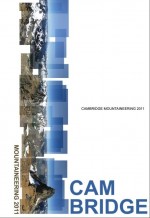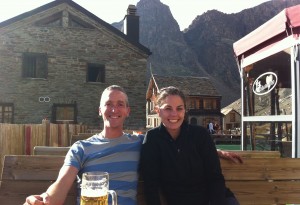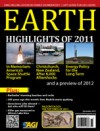While scrubbers in smokestacks at coal plants can pull out toxic gases like sulfur dioxide, scientists haven’t yet developed a cost-effective technology to remove carbon dioxide from industrial exhaust. Now European researchers have tinkered with the chemical composition of limestone to produce a material that absorbs almost twice as much CO2 as the natural mineral can (Environ. Sci. Technol., DOI: 10.1021/es2034697).
Category Archives: Formats
Jaegihorn incident report
 Messieurs Goldman and Davenport, in Switzerland for the McCombie nuptials, invited Ms Crockett and Mr Laursen to an attempt on the Jaegihorn, above Saas Grund in the Swiss Valais region. Goldman and Davenport charmed the hut mistress into providing extra victuals. With full bellies and a 4am start, Laursen led the team on a circular tour of a neighbouring moraine in a suspected effort to escape the climb.
Messieurs Goldman and Davenport, in Switzerland for the McCombie nuptials, invited Ms Crockett and Mr Laursen to an attempt on the Jaegihorn, above Saas Grund in the Swiss Valais region. Goldman and Davenport charmed the hut mistress into providing extra victuals. With full bellies and a 4am start, Laursen led the team on a circular tour of a neighbouring moraine in a suspected effort to escape the climb.
When the fog cleared and the su n rose, however, the team identified the start of the Alpendurst route and commenced climbing activities culminating in a successful summit. From here the evidence grows patchier. The two rope teams lost sight of one another. Subsequent reports from CUMC Zurich stationmaster Kavanaugh place Goldman and Davenport on a dance floor at a castle outside Basel ca. 3am. Davenport failed to report to the post-climb debriefing in Dietikon while Goldman reported to Dietlikon instead. Kavanaugh relieved all parties of their duties in disgust.
n rose, however, the team identified the start of the Alpendurst route and commenced climbing activities culminating in a successful summit. From here the evidence grows patchier. The two rope teams lost sight of one another. Subsequent reports from CUMC Zurich stationmaster Kavanaugh place Goldman and Davenport on a dance floor at a castle outside Basel ca. 3am. Davenport failed to report to the post-climb debriefing in Dietikon while Goldman reported to Dietlikon instead. Kavanaugh relieved all parties of their duties in disgust.
See the original as it appeared in Cambridge Mountaineering: [pdf]
Mantle Recycles Far Faster Than Thought
 The magma that rises from the mantle, forming new islands, may blast more than it bubbles. Where those plumes of magma originate — at the core-mantle boundary or the mantle-crust boundary — and how fast they rise to the surface are still open questions among volcanologists. But now a new study of minerals from the volcano Mauna Loa on the Big Island of Hawaii suggests that some elements made a 2,900-kilometer-long journey from the core-mantle boundary to Earth’s surface in as little as half a million years — quadruple the speed found by previous studies. Continue reading Mantle Recycles Far Faster Than Thought
The magma that rises from the mantle, forming new islands, may blast more than it bubbles. Where those plumes of magma originate — at the core-mantle boundary or the mantle-crust boundary — and how fast they rise to the surface are still open questions among volcanologists. But now a new study of minerals from the volcano Mauna Loa on the Big Island of Hawaii suggests that some elements made a 2,900-kilometer-long journey from the core-mantle boundary to Earth’s surface in as little as half a million years — quadruple the speed found by previous studies. Continue reading Mantle Recycles Far Faster Than Thought
Extreme Weather More Frequent in Northern Europe
 Northern Europe may have gotten stormier since the late Victorian Era. Looking at a fresh analysis of old atmospheric pressure data, researchers found that the annual number of windy days may have risen by one to five days per century in parts of northern Europe, and the intensity of such storms may have grown too. Continue reading Extreme Weather More Frequent in Northern Europe
Northern Europe may have gotten stormier since the late Victorian Era. Looking at a fresh analysis of old atmospheric pressure data, researchers found that the annual number of windy days may have risen by one to five days per century in parts of northern Europe, and the intensity of such storms may have grown too. Continue reading Extreme Weather More Frequent in Northern Europe
